A nanoscale rotary motor made of DNA origami, driven by ratcheting and powered by an external electric field, shows the ability to wind up a spring and has mechanical capabilities approaching those of biological motors.
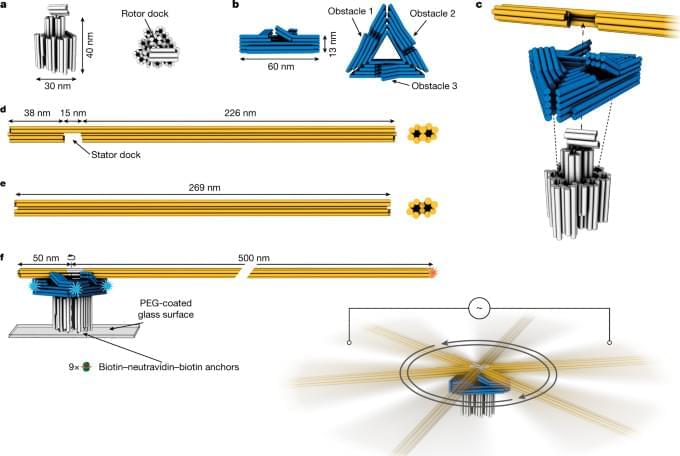

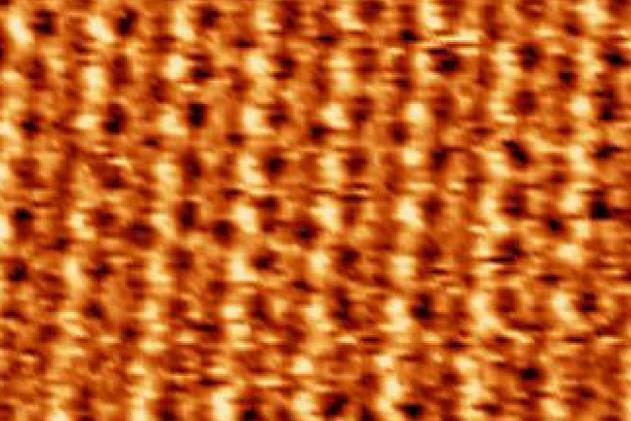
New electrocatalysis electrodes have been created that are simpler and cheaper than conventional ones, and can substantially increase the efficiency of water splitting. Decorated with chiral molecules like helicenes, these devices double the activity of the oxygen evolution reaction, the bottleneck of the process, and improve its selectivity.
‘With electrocatalysis, we [can] use electrons from renewable sources [like solar and wind] to produce clean chemicals and fuels,’ explains Magalí Lingenfelder from the Max Planck–EPFL laboratory for molecular nanoscience and technology, in Switzerland, who led the study. In this work, her team focused on the oxygen evolution reaction. ‘It’s the bottleneck of water splitting,’ she says. ‘We wanted to increase its performance with cheap, simple solutions.’
Metamaterial Space Applications:
In this presentation I will talk about nanophotonics, more specifically metasurfaces – subwavelength patterned surfaces – and explain how this can be used for space applications. As recently displayed by the stunning images from the James Webb space telescope, we often rely on recording the intensity of light (e.g. with a camera) to study the universe. However, light fundamentally has several additional degrees of freedom which can carry information, e.g. polarization, phase, and spectral content. While it is true that many conventional optical components can address these degrees of freedom individually (e.g., polarizers, phase retarders, and filters), metasurfaces enable general manipulations of phase, amplitude, and polarization on the nanoscale, thereby providing ample opportunity to create new versions of existing components and even enable functionality not possible using conventional technologies. In the presentation I will cover several examples of metasurfaces I have been working on and explain their relevance for space applications. I will attempt to explain the working principles, why metasurfaces can be useful, as well as how we fabricate metasurfaces in a cleanroom.
About the speaker: Dr. Tobias Wenger is a postdoc at JPL’s microdevices laboratory (MDL) where his main efforts relate to nanophotonics — light at the nanoscale – and how we can engineer structures and components in order to control light in new ways. Tobias received his PhD from Chalmers University of Technology, Sweden, where he worked on understanding the physical properties of plasmons in graphene.
At JPL, Tobias is applying his knowledge of subwavelength electromagnetics to design metasurface-based optical components, mainly for infrared wavelengths. Metasurfaces are a novel approach to optics which uses subwavelength elements for controlling the phase, amplitude and polarization of transmitted and/or reflected electromagnetic radiation. Tobias research interests intersect optics, computational electromagnetics, and microfabrication and he enjoys both the practical and theoretical aspects of this work. During his postdoc time at MDL, he has worked on metasurface-based optical concentrators, IR detectors, plasmonic filters, wavefront sensing, and grating replication.

A space elevator, a technology connecting the Earth’s surface to a space station, would allow for the cost-efficient transport of people and materials. However, a very light yet strong material is essential to making such a technology a reality.
The carbon nanotube is a material that is 100 times stronger, yet four times lighter, than steel, with copper-like high electrical conductivity and diamond-like thermal conductivity. However, previous carbon nanotube fibers were not ideal for extensive use, owing to the small contact area with adjacent carbon nanotubes and limited length they possessed.
Figure 1. Schematic of the structural changes of carbon nanotubes at different annealing temperatures. (Image: Korea Institute of Science and Technology)

In a new paper in PNAS, “Triplet-Pair Spin Signatures From Macroscopically Aligned Heteroacenes in an Oriented Single Crystal,” National Renewable Energy Laboratory (NREL) researchers Brandon Rugg, Brian Fluegel, Christopher Chang, and Justin Johnson tackle one of the fundamental problems in quantum information science: how to produce pure elements of quantum information—that is, those that start and remain in a well-defined “spin state”—at practical temperatures.
Quantum information science has the potential to revolutionize computation, sensing, and communications. But many of these applications are still beyond reach because of the challenges of producing units of quantum information, or qubits, without relying on extremely low temperatures to maintain their purity. Current approaches to identifying suitable quantum materials tend to rely on trial and error.
“The field of developing new molecules and materials [for quantum information science] sometimes progresses through ad hoc methods and serendipity. ‘This material just so happens to work better than the other one’—we saw a lot of that happening, and decided ultimately that it was not going to suffice for a project where the goal was to limit the set of possible options,” said Justin Johnson, a researcher in NREL’s Chemistry and Nanoscience Center. “We wanted to have the theory provide us with firm guidelines about what should happen.”
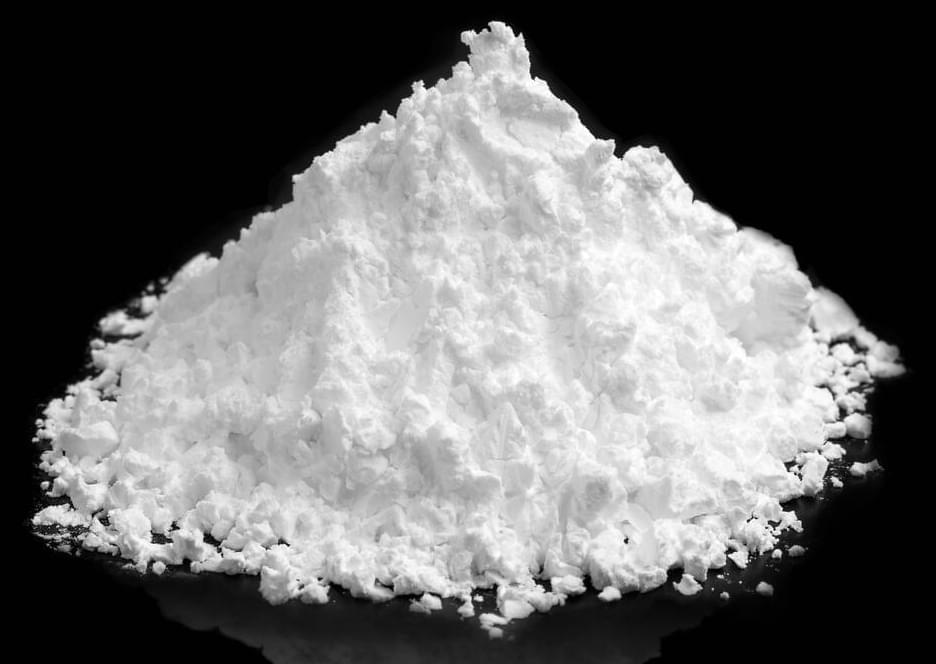
Australian scientists say they’ve made a “eureka moment” breakthrough in gas separation and storage that could radically reduce energy use in the petrochemical industry, while making hydrogen much easier and safer to store and transport in a powder.
Nanotechnology researchers, based at Deakin University’s Institute for Frontier Materials, claim to have found a super-efficient way to mechanochemically trap and hold gases in powders, with potentially enormous and wide-ranging industrial implications.
Mechanochemistry is a relatively recently coined term, referring to chemical reactions that are triggered by mechanical forces as opposed to heat, light, or electric potential differences. In this case, the mechanical force is supplied by ball milling – a low-energy grinding process in which a cylinder containing steel balls is rotated such that the balls roll up the side, then drop back down again, crushing and rolling over the material inside.
Researchers at Rice University have shown how they can hack the brains of fruit flies to make them remote controlled. The flies performed a specific action within a second of a command being sent to certain neurons in their brain.
The team started by genetically engineering the flies so that they expressed a certain heat-sensitive ion channel in some of their neurons. When this channel sensed heat, it would activate the neuron – in this case, that neuron caused the fly to spread its wings, which is a gesture they often use during mating.
The heat trigger came in the form of iron oxide nanoparticles injected into the insects’ brains. When a magnetic field is switched on nearby, those particles heat up, causing the neurons to fire and the fly to adopt the spread-wing pose.
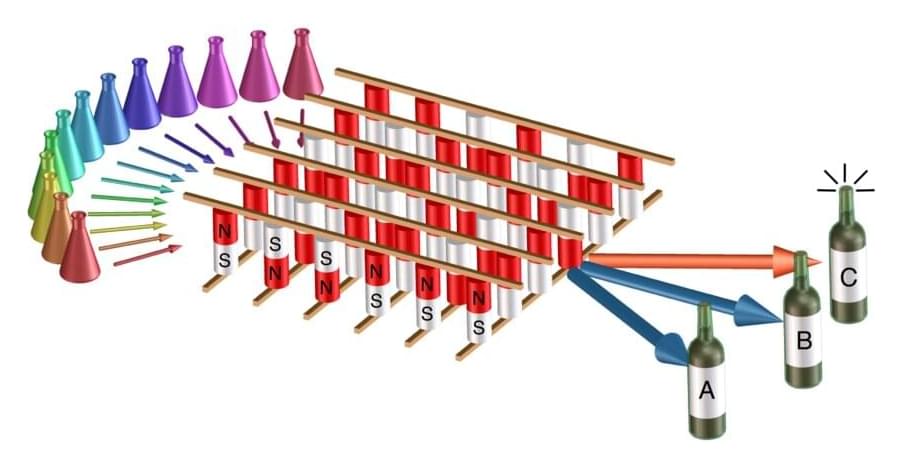
Human brains process loads of information. When wine aficionados taste a new wine, neural networks in their brains process an array of data from each sip. Synapses in their neurons fire, weighing the importance of each bit of data—acidity, fruitiness, bitterness—before passing it along to the next layer of neurons in the network. As information flows, the brain parses out the type of wine.
Scientists want artificial intelligence (AI) systems to be sophisticated data connoisseurs too, and so they design computer versions of neural networks to process and analyze information. AI is catching up to the human brain in many tasks, but usually consumes a lot more energy to do the same things. Our brains make these calculations while consuming an estimated average of 20 watts of power. An AI system can use thousands of times that. This hardware can also lag, making AI slower, less efficient and less effective than our brains. A large field of AI research is looking for less energy-intensive alternatives.
Now, in a study published in the journal Physical Review Applied, scientists at the National Institute of Standards and Technology (NIST) and their collaborators have developed a new type of hardware for AI that could use less energy and operate more quickly—and it has already passed a virtual wine-tasting test.
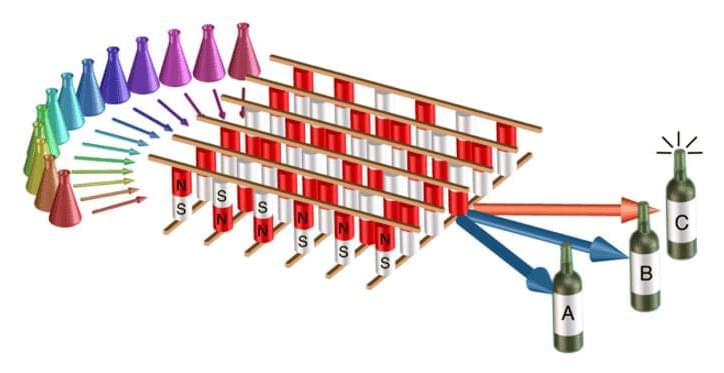
Summary: A new artificial neural network aced a wine tasting test and promises a less energy-hungry version of artificial intelligence, researchers report.
Source: NIST
Human brains process loads of information. When wine aficionados taste a new wine, neural networks in their brains process an array of data from each sip. Synapses in their neurons fire, weighing the importance of each bit of data — acidity, fruitiness, bitterness — before passing it along to the next layer of neurons in the network. As information flows, the brain parses out the type of wine.